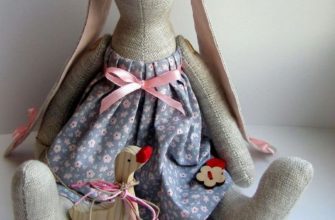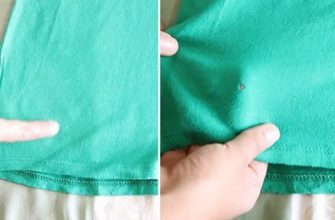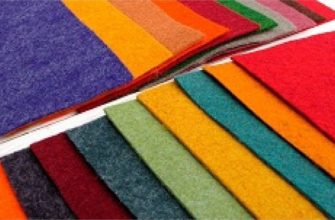Curtains are one of the most important parts of the room's decor. The entire style of the room depends on their type, color, and texture. They help regulate lighting, hide imperfections, and focus all attention on themselves. This article talks about how to sew curtains with your own hands, and also presents patterns for curtains.
- What types of curtains can you sew yourself?
- Deciding on the form
- A little about choosing fabric
- Direction of the pattern in the roll
- How to calculate fabric consumption for a curtain
- Making allowances
- Creation of the drawing and initial work
- Sewing curtains with your own hands: step-by-step instructions for joining panels
- How to sew curtains: patterns
- The second stage of work is cutting
- Edge treatment on the side
- Sewing on curtain tape
- How to sew Roman blinds for the kitchen - step-by-step instructions
- Sewing a lambrequin: from creating a pattern to forming a finished product
- Secrets of simple but successful drapery
What types of curtains can you sew yourself?
The first thing you need to decide is what style of curtains you want to sew. There are a great many different types of curtains and drapes, but the main ones are no more than 8. The main curtain models are very similar to each other and differ in small nuances of design.
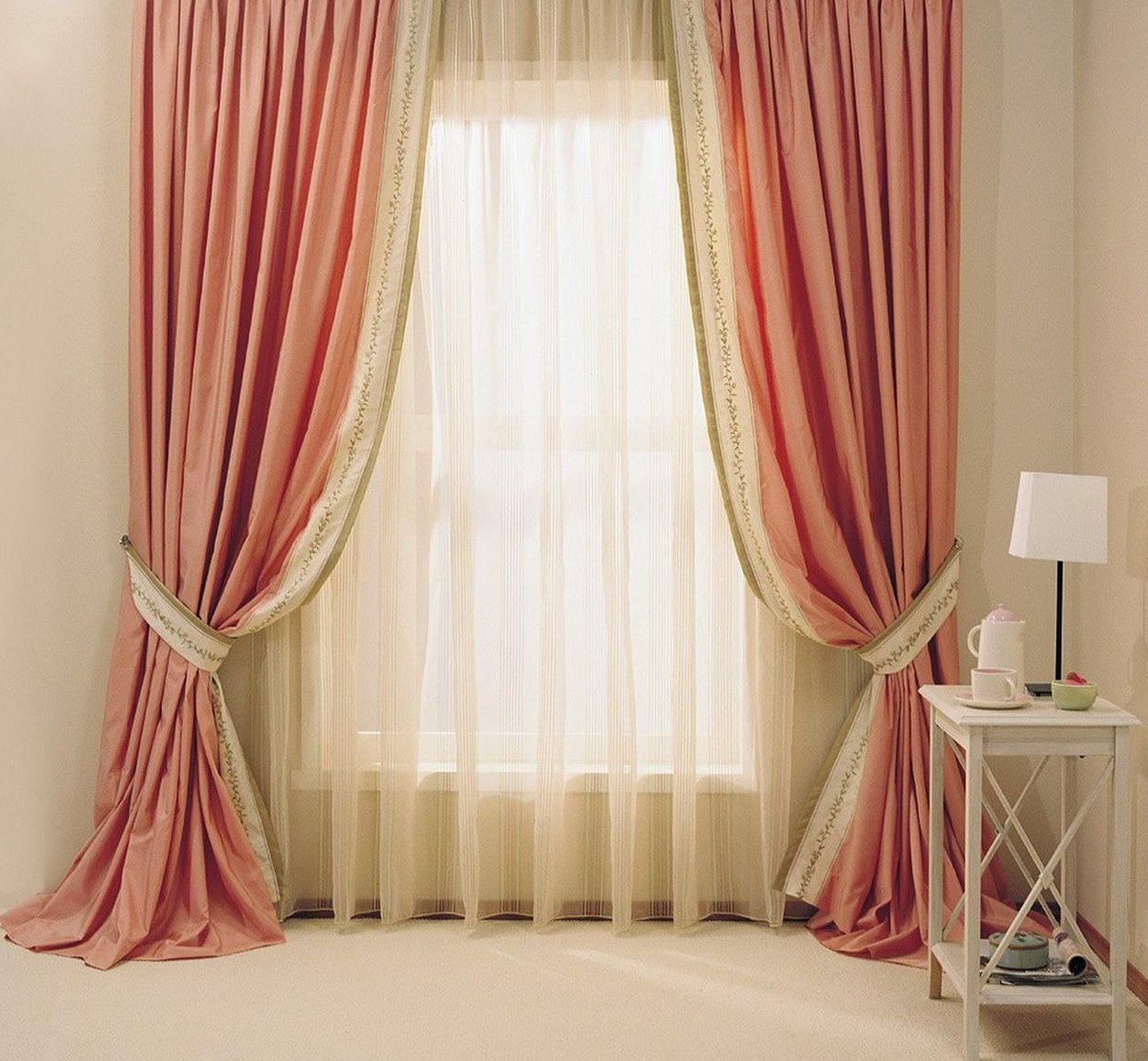
For those who have no experience in sewing curtains, you need to familiarize yourself with the models of products. The most popular styles of curtains:
- English curtains;
- roman blinds;
- classic curtains with laces;
- lambrequins;
- angular.
After studying all the basic styles of curtains, you need to prepare a set of tools and materials for work.
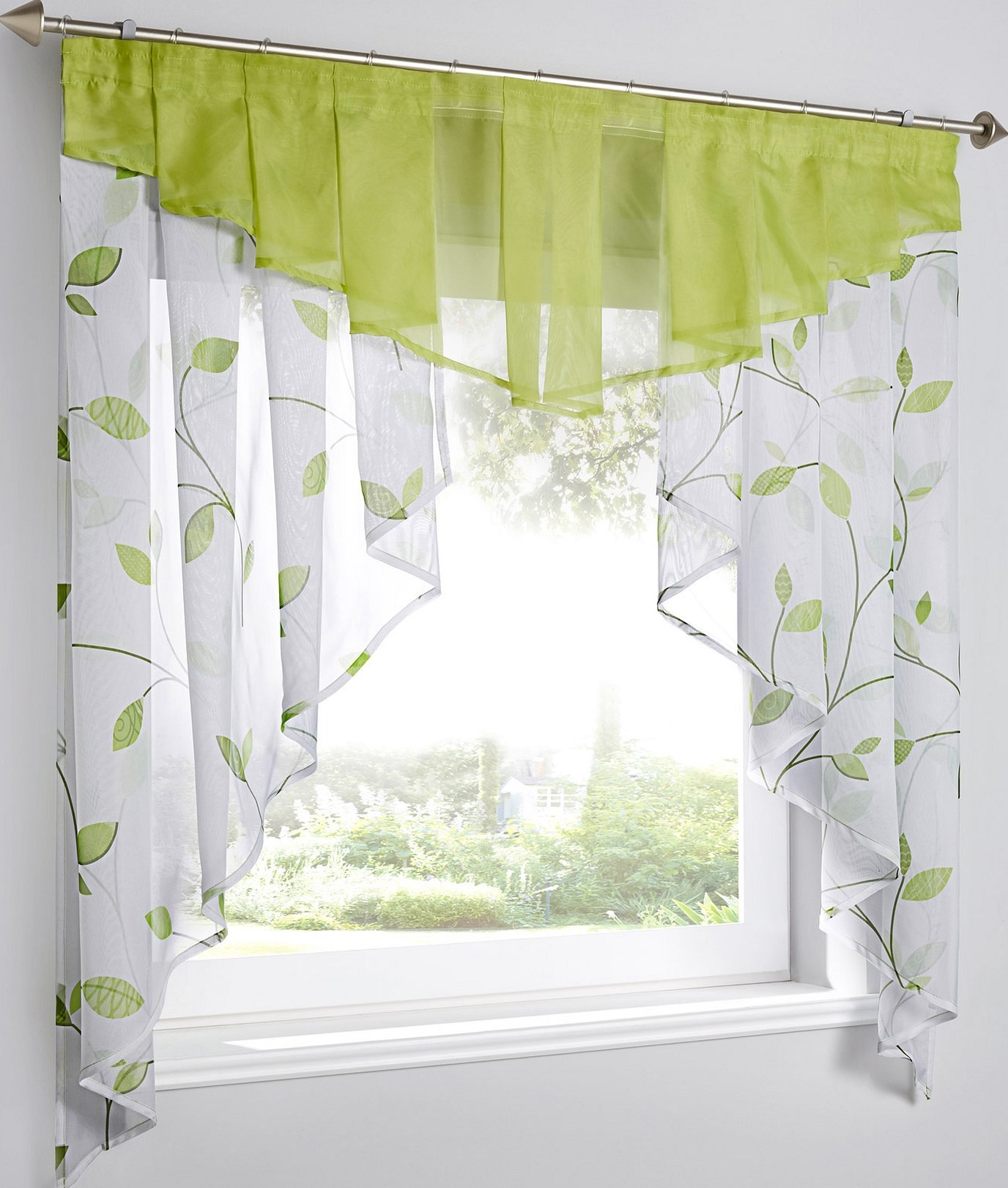
Deciding on the form
Straight curtains are suitable for small windows. They look good in rooms where you need to create a simple interior, similar to a country house, or for decorating a child's bedroom. Straight curtains are usually complemented with decorative cords. They are made from the main or finishing material or made from thick threads and tassels. You can also shape the curtain using a hook on the wall.
A little about choosing fabric
Before buying the material, you need to weigh everything carefully. Decide in which room the curtains will be located. The choice of material very often depends on this.
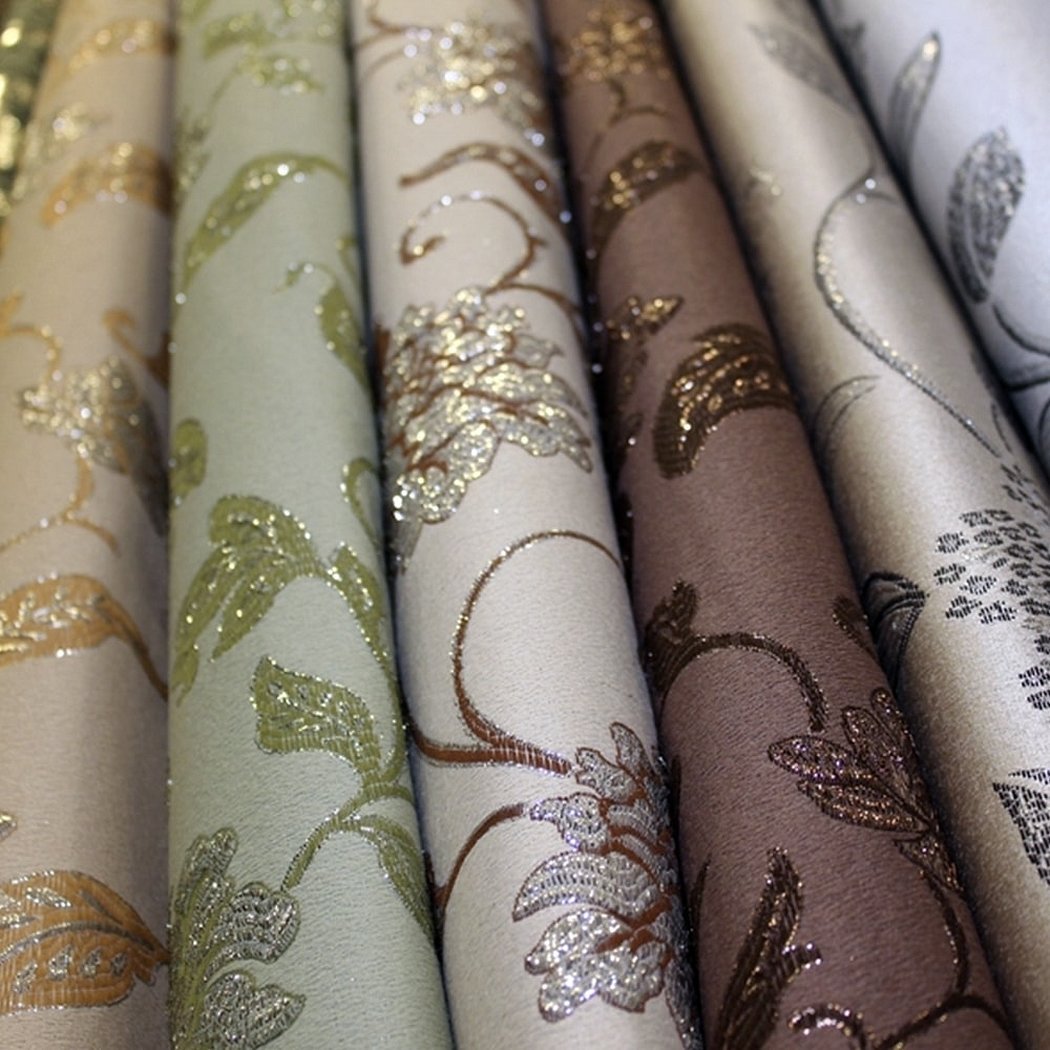
For the kitchen area, choose light curtains made of cotton or linen. They are completely natural and easy to care for. A cascade or arch style will work great.
Attention! Synthetic fabrics are not used for the kitchen.
If curtains are needed for the bedroom, it is advisable to choose more delicate and calm colors. The curtains should be very thick (blackout) to protect the room from direct sunlight. Such fabrics are also used for summer verandas. It is advisable to buy thick material without patterns. Curtains for a child's room should be made of bright and light colors. Fabrics for curtains that need to be used to decorate a living room are selected depending on the style of the room. Anything from regular velvet to double-sided linen will do here, if the hall is decorated in a folk style. You can draw a template for the window. This will help you choose which shape and length of curtains will look best in the house. In the store, it is better to consult with the seller and look at all the samples of curtain fabrics.
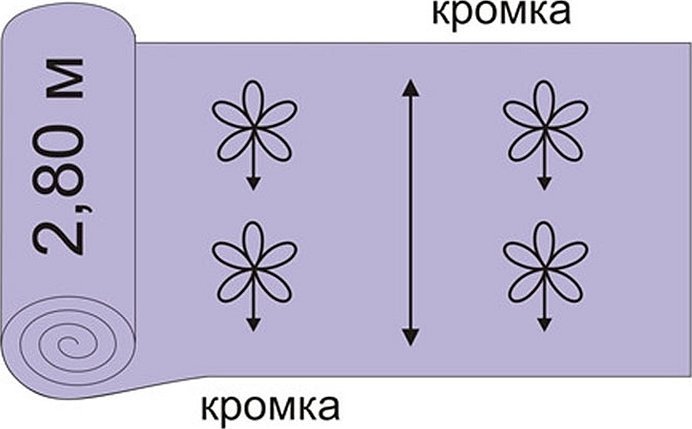
Direction of the pattern in the roll
Basically, the print on the material is directed perpendicularly, which helps to make a curtain of any width and the required height. If the pattern is directed along the roll, this limits the width of the curtain to 3 meters, but the height can be any. You will need more material with a print, because it is necessary to correctly combine the pattern. You also need to remember about the seam allowances. Very often, the print goes along the direction of the material in the roll.
How to calculate fabric consumption for a curtain
You can calculate the fabric by three parameters. The main one will be the calculation by length.
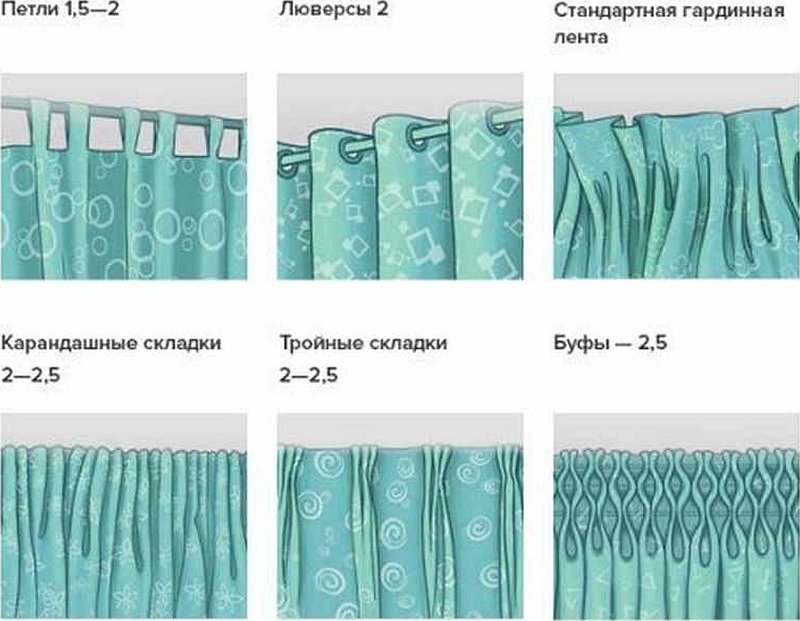
First, find the distance from the cornice to the desired end mark - the floor or window. This will be the length of the finished curtain. The length of the curtains can be optionally:
- the longest models do not reach the floor by 1 cm;
- reach the floor with a train of up to 10 cm;
- reach the window sill line;
- is located 10 cm below the window sill.
Calculation of fabric by width. The material consumption for curtains by width is calculated taking into account three indicators:
- cornice length;
- material assembly coefficient;
- seam allowances.
First, you need to measure the working length of the curtain rod. The curtain rod protrudes approximately 15 cm beyond the window so that the curtains can be freely pulled apart. The resulting figure is multiplied by the fold coefficient.
Uniform correct drapery is related to the thickness and structure of the material. The thinner and lighter the fabric, the higher the number will be acceptable. For example, for veils and chiffon the fold coefficient will be from 2 to 4, for dense fabrics 1.5-2.
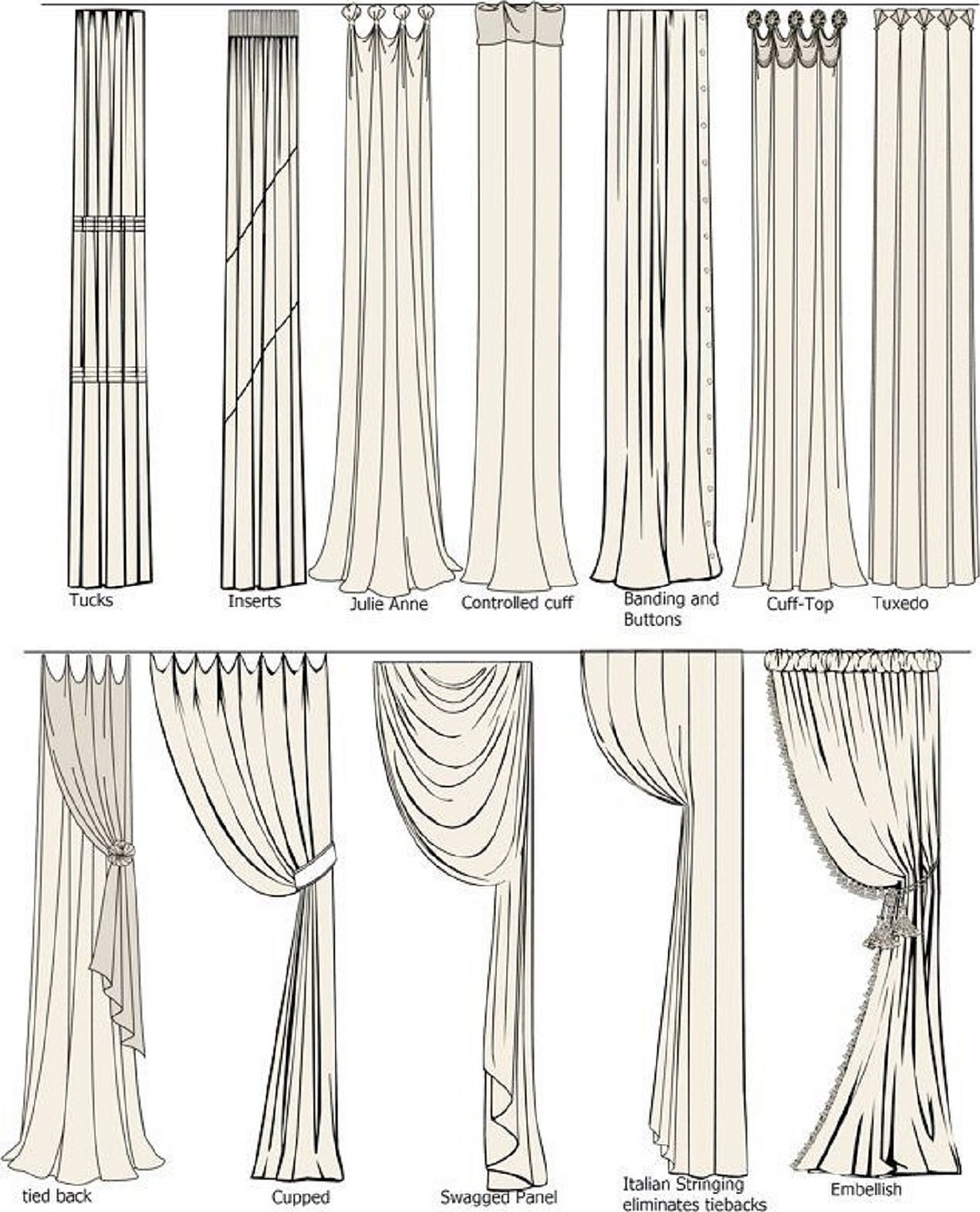
Making allowances
When folding the lower hem of the curtain, 5-8 cm are added to the finished length; this is necessary for shrinkage after the first wash. This allowance depends on the type of material. Natural fabrics made of cotton, chintz, silk, and linen have a high shrinkage of up to 12% of the initial length.
Creation of the drawing and initial work
Before you start sewing, you need to find or describe your own curtain templates, choose sketches, patterns, more suitable materials and solve other problems. All size parameters must be marked on the pattern. Self-made templates can be no worse than store-bought ones. It is important to take measurements from the window correctly.
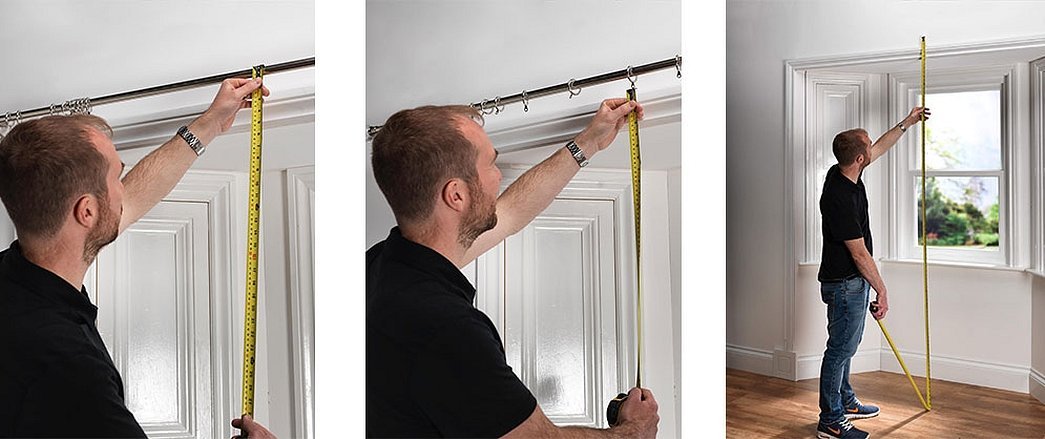
If you need to sew curtains in a studio, then the success of the product depends on the measurements that a person takes. If they are incorrect, then the curtain will end up ugly, and the fault will lie only with the client. You need to think through all the details, color, shape and number of folds.
The style of curtains should fully fit into the overall design of the room, not look bulky and pretentious. Below you can read the step-by-step sewing of curtains with your own hands.
Sewing curtains with your own hands: step-by-step instructions for joining panels
The process of making curtains consists of several steps:
- connection of two elements;
- ironing;
- sewing on a sewing machine;
- cutting off the basting;
- smoothing out elements.
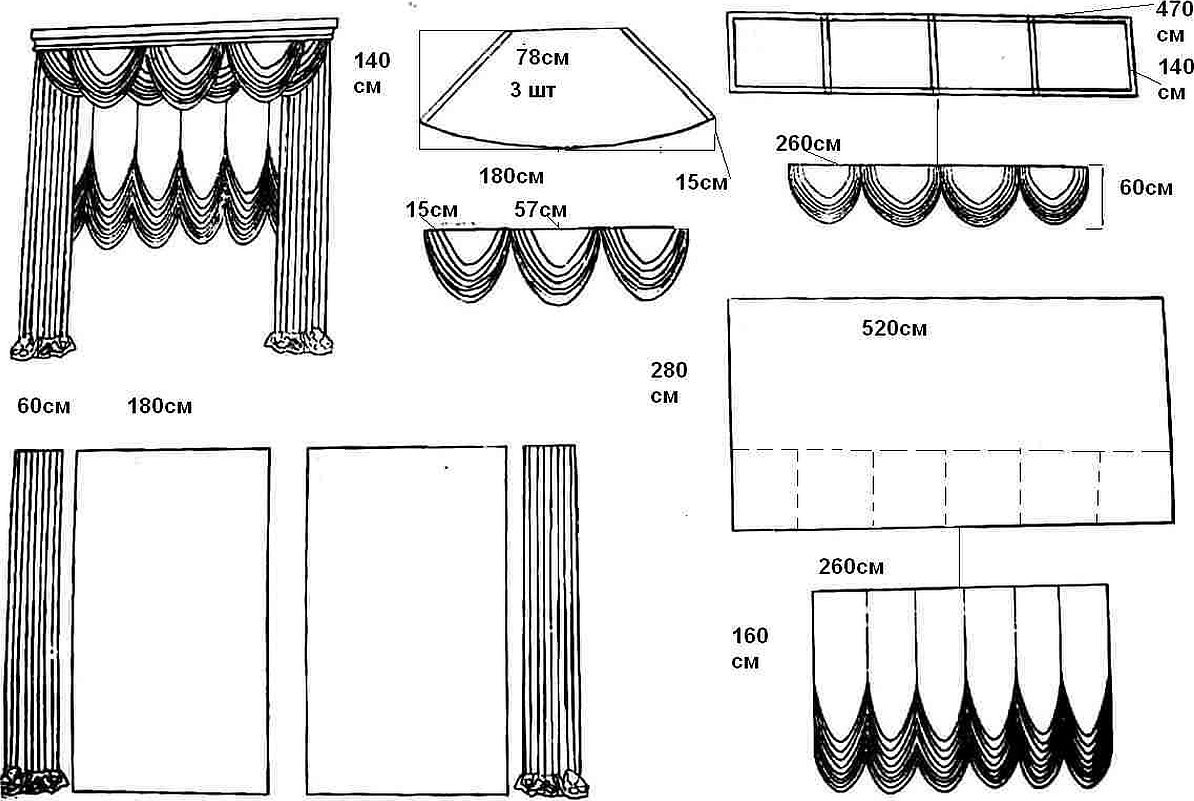
Below is a detailed description of the process of sewing curtains with your own hands.
How to sew curtains: patterns
Like any work, sewing curtains begins with creating a pattern. You can find it on the Internet or draw it yourself. It is important to indicate all the dimensions (length, width, etc.), choose the color of the fabric, the number of folds, the density of the products. This is the most important stage, since the type of product depends on it.
The second stage of work is cutting
Before working with the material, it is advisable to wash it so that it makes its first shrinkage. Then dry the fabric and iron it from the inside. Prepare the tools for work:
- textile roller;
- disappearing marker;
- tailor's pins;
- measuring tape;
- ruler.
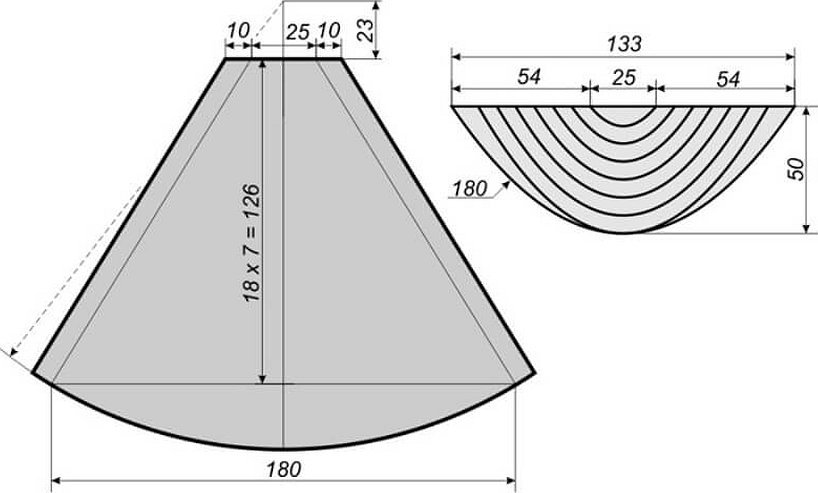
When cutting out the elements, you need to focus on the indication of the shared thread, so that the curtain does not change shape when used. Cutting is done from large panels:
- lay the fabric on the surface with the inside facing up;
- place the pattern elements on the material;
- trace them with a marker, remembering to leave allowances (10 cm on top, 5 cm on the sides).
Edge treatment on the side
The edges of the material are mainly processed manually, this is even better for plain, smooth-structured fabrics - the stitches on the outer side will remain invisible. The main thing is to grab only one thread of the main fabric with the needle. Thicker stitches will be visible later.
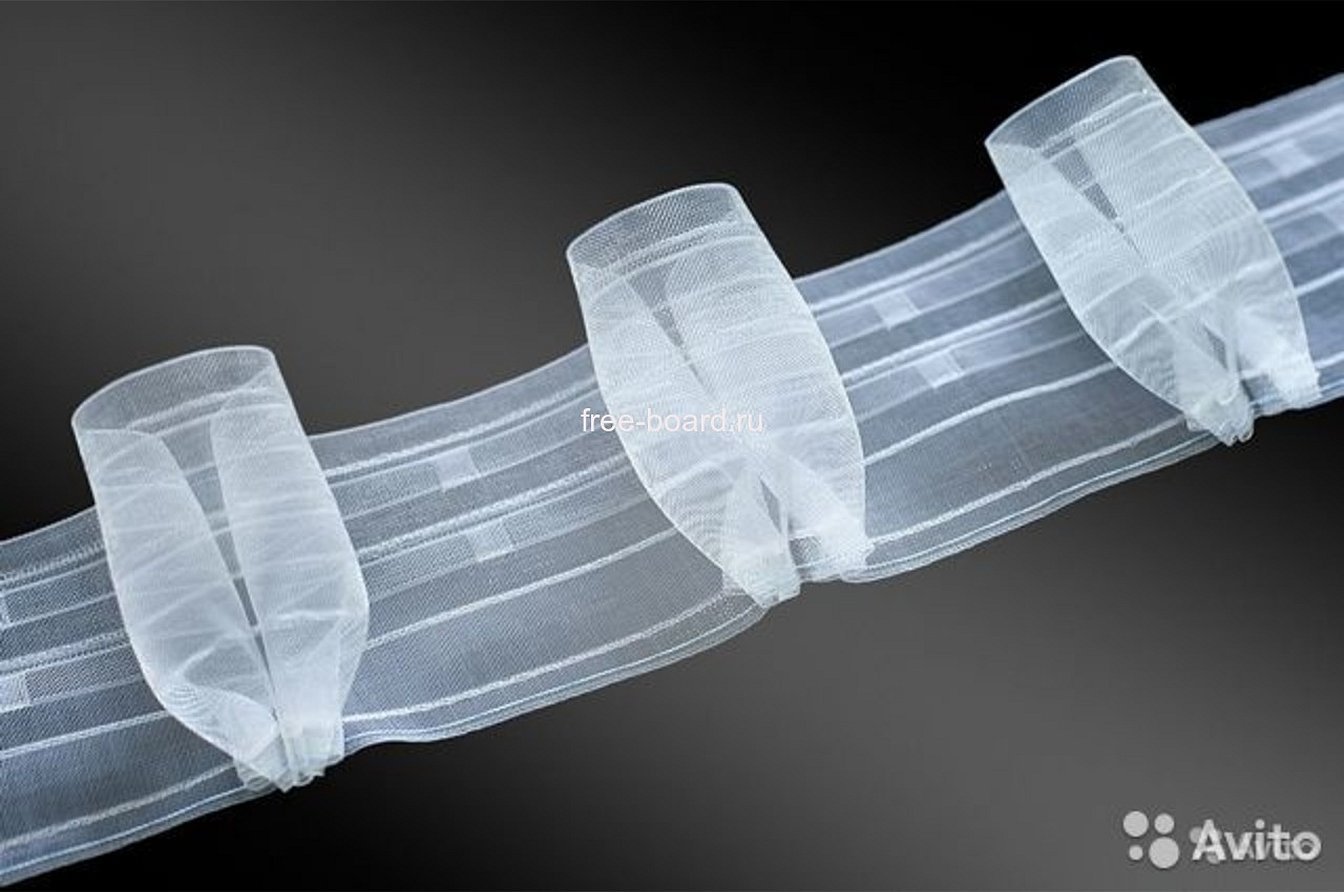
Sewing on curtain tape
Stages of sewing curtain tape:
- prepare the curtain, fold the top edge to the inside and iron, the fold size is 2-3 cm;
- attach the curtain tape to the top edge of the curtain (from the inside), leaving a 1 cm gap from the edge;
- pull out the laces;
- bend the edges of the tape by 2-2.5 cm;
- stitch each edge with a machine.
Features of kitchen curtains
Weightless and thin materials (veil, organza, tulle) are suitable for the kitchen. For the kitchen, you can choose fabrics with a variety of textures. Curtains with glass beads look very good.
Sometimes curtains are used for the kitchen to limit access to sunlight, dense and dark fabrics are chosen for them. Kitchen curtains should not be long, literally to the windowsill. In this case, they will have to be washed less often.
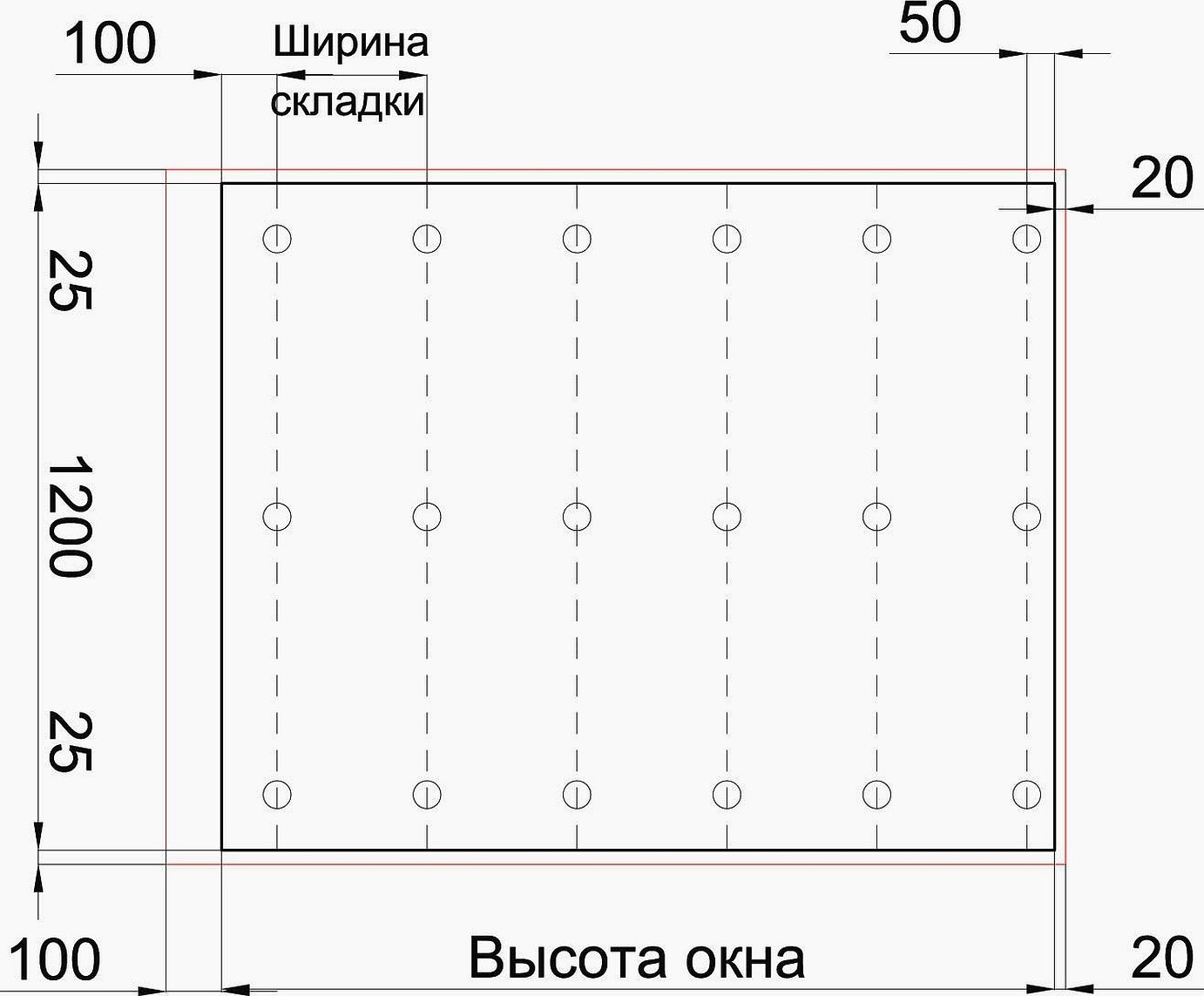
How to sew Roman blinds for the kitchen - step-by-step instructions
Tools for work:
- adhesive tape;
- lamellas;
- fabric of your choice;
- transparent PVA glue;
- measuring tape;
- fabric roller.
Using a tape measure, cut the fabric perfectly evenly along the markings. To process the edge, it is necessary to fold it inside out on both sides (by 3 cm).
Place adhesive tape no more than 2 cm wide into the fold and iron it well along the entire length of the material.
Prepare the slats. Remove the nylon threads responsible for regulating sunlight. They are located next to the thicker ropes responsible for the lifting and lowering device.
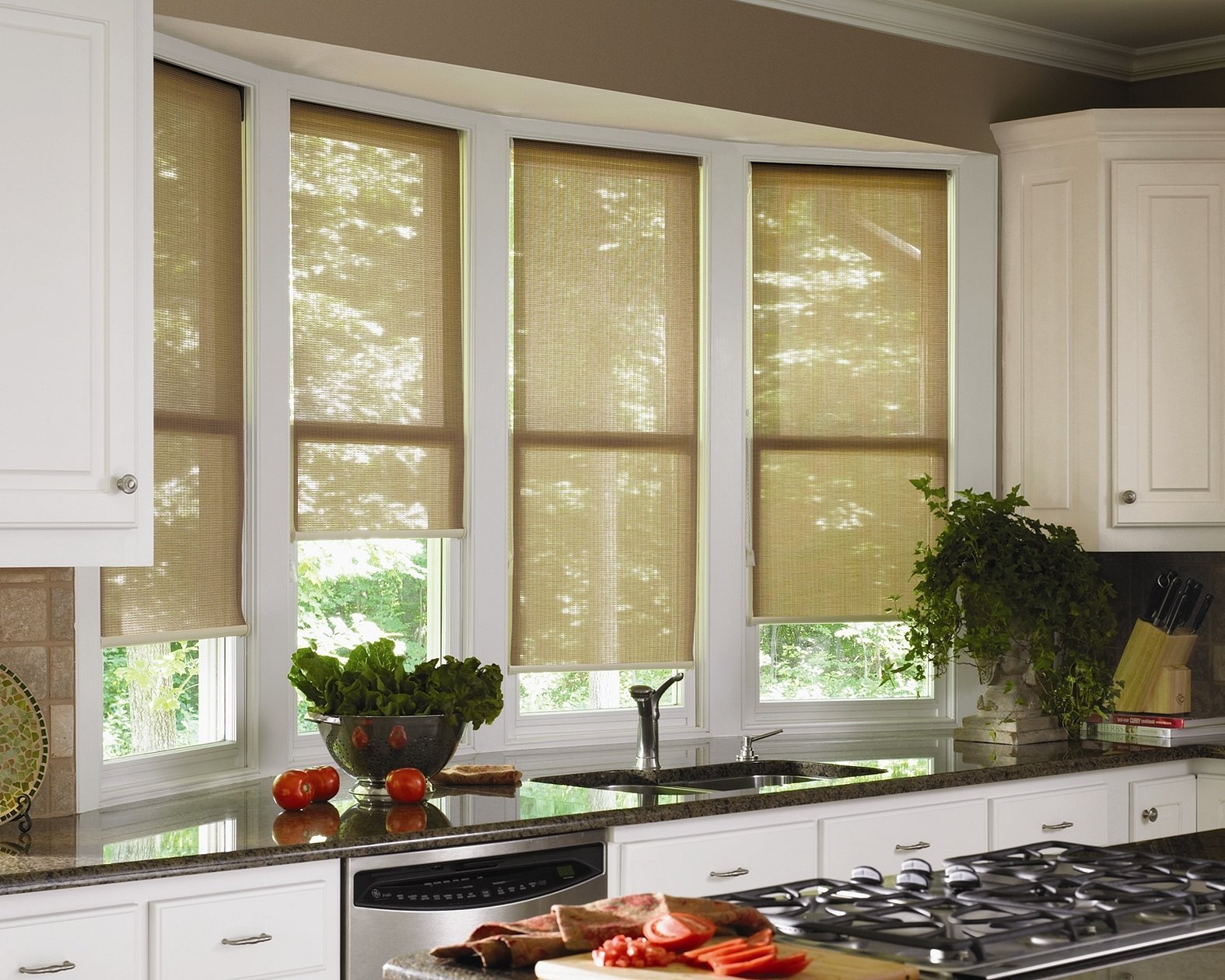
Remove excess slats, aiming for the required number of folds of material. For example, with the main length of the product of 130 cm, it is necessary to select 5 slats. Then it is necessary to assemble the Roman blinds.
Attach the upper side of the fabric base to the cornice, bending its edge well. Evenly arrange and glue the slats along the entire length of the canvas, without touching the rope mechanism.
Using PVA, fix the edge of the fabric on a volumetric strip, which will act as a weight.
Sewing a lambrequin: from creating a pattern to forming a finished product
Materials and tools for sewing:
- base material;
- lining fabric;
- nuts and screws.
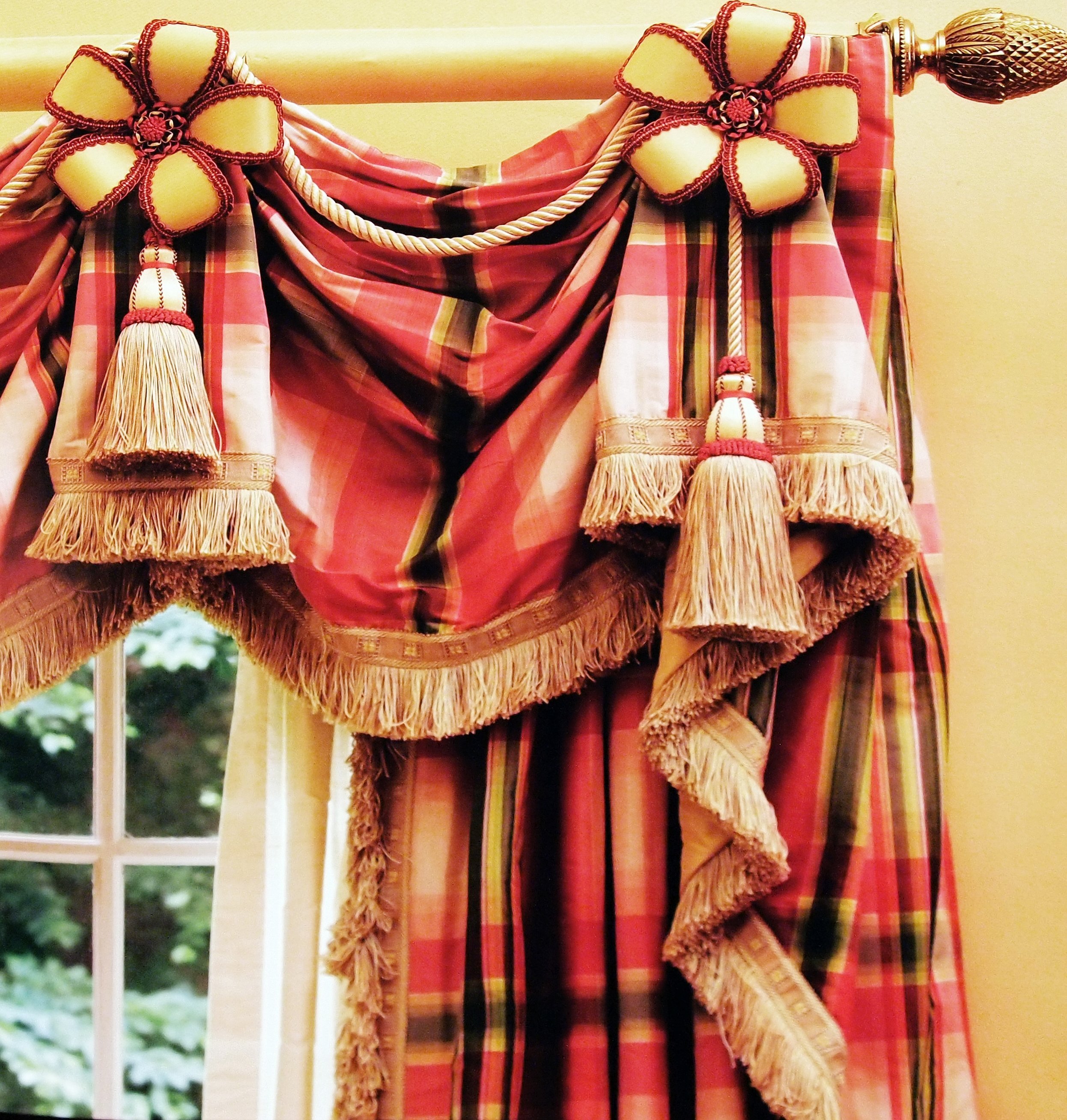
First, you need to make a pattern, you can find many options on the handicraft site. After the style of the curtains is known, the fabric is bought and sewing begins.
To begin, attach the material 8 cm above the window, the distance on the side should not be more than 7 cm. This type of lambrequin can be sewn lengthwise to the window sill.
It is important to make the calculations correctly. For a 45 cm cornice, 70 centimeters of material are needed.
Cut the lining material, which is used to add rigidity. It will hold the folds. Connect and pin all the layers and make a seam, leaving 25 centimeters unfinished at the top. Turn the product inside out and close the holes. Attach the cornice to the curtain and make the desired number of folds, tightening them with laces.
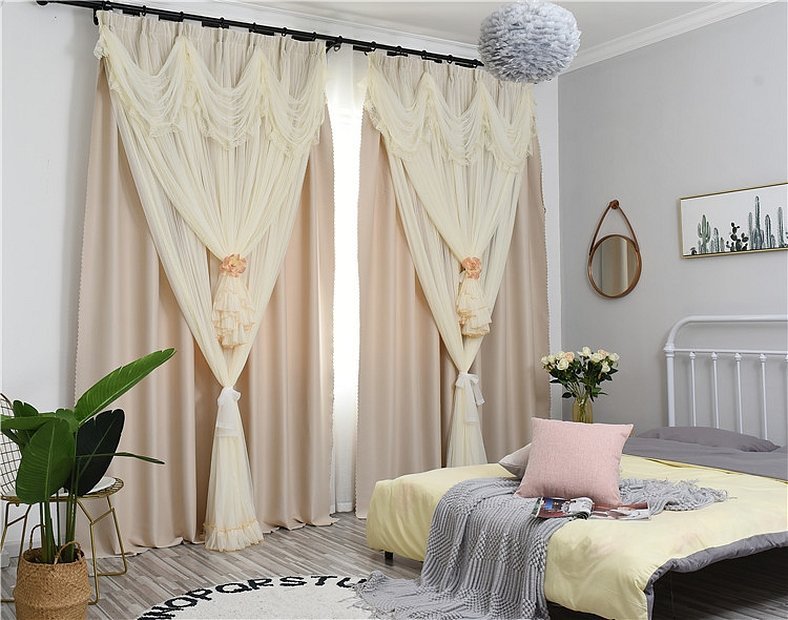
Secrets of simple but successful drapery
You can beautifully decorate a lambrequin curtain, which is made from a mechanical throw that smoothly turns into a jabot. The curtain consists of a whole rectangular piece of material. To give it a luxurious look, it is necessary to make drapes.
With the help of tape, you can make a beautiful drapery in the form of a bow or accordion. Such options look quite good in the living room. Basically, various accessories and grabs with loops are used to fix the folds.
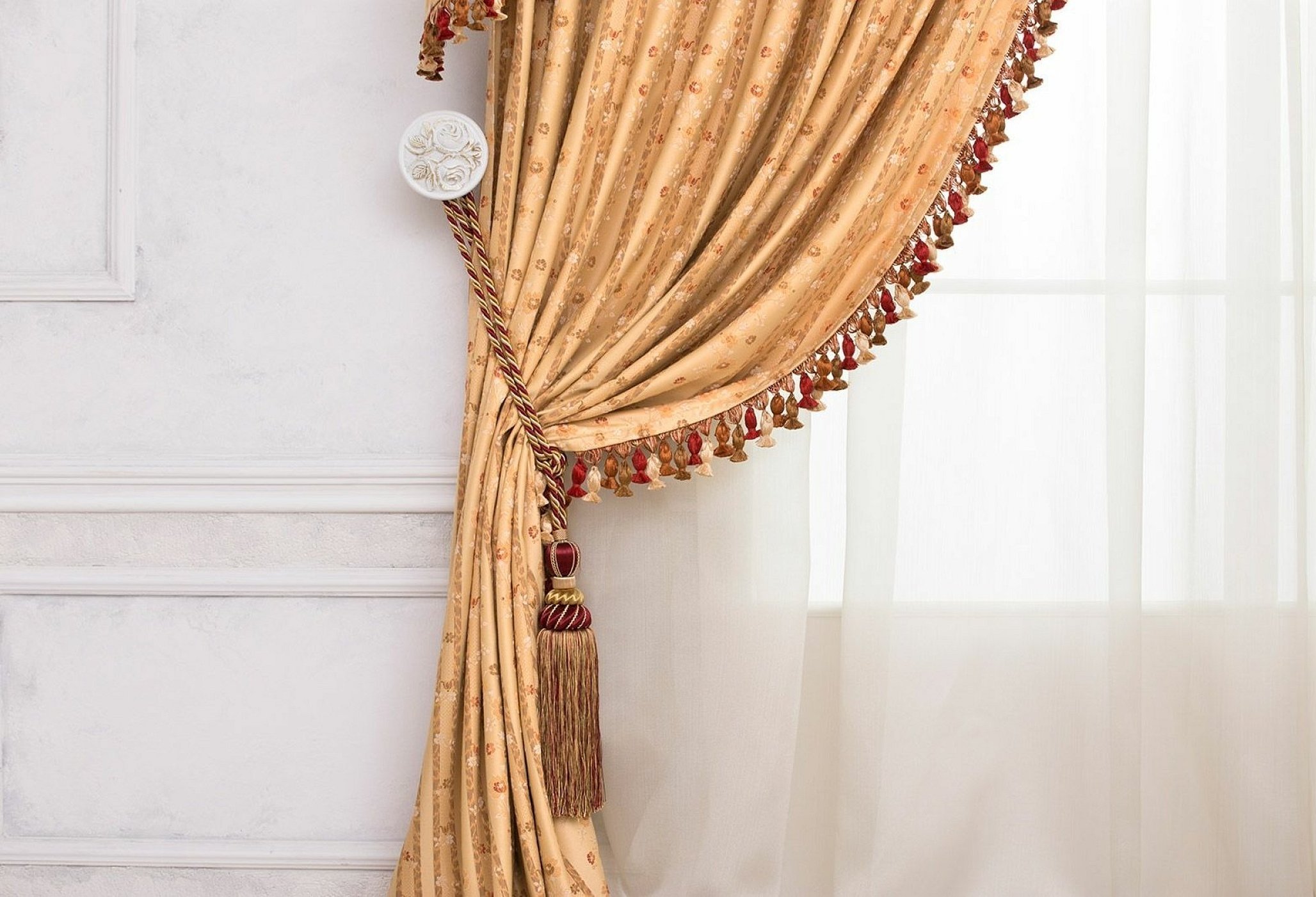
Thus, sewing curtains with your own hands is easy, it is only important to take the correct measurements of the window. Beginner needlewomen are recommended to watch master classes on the work.

